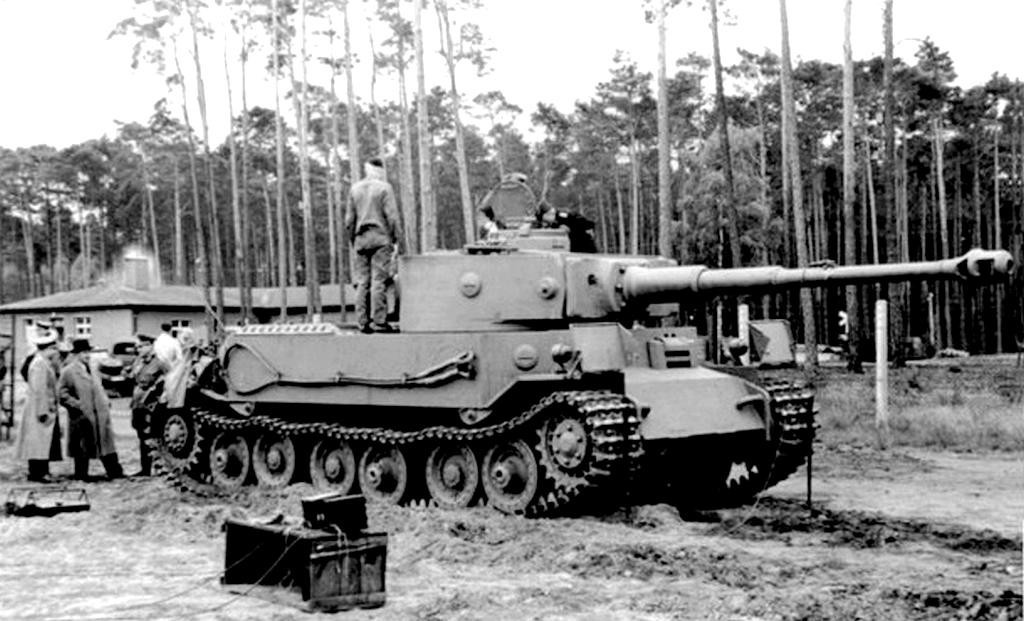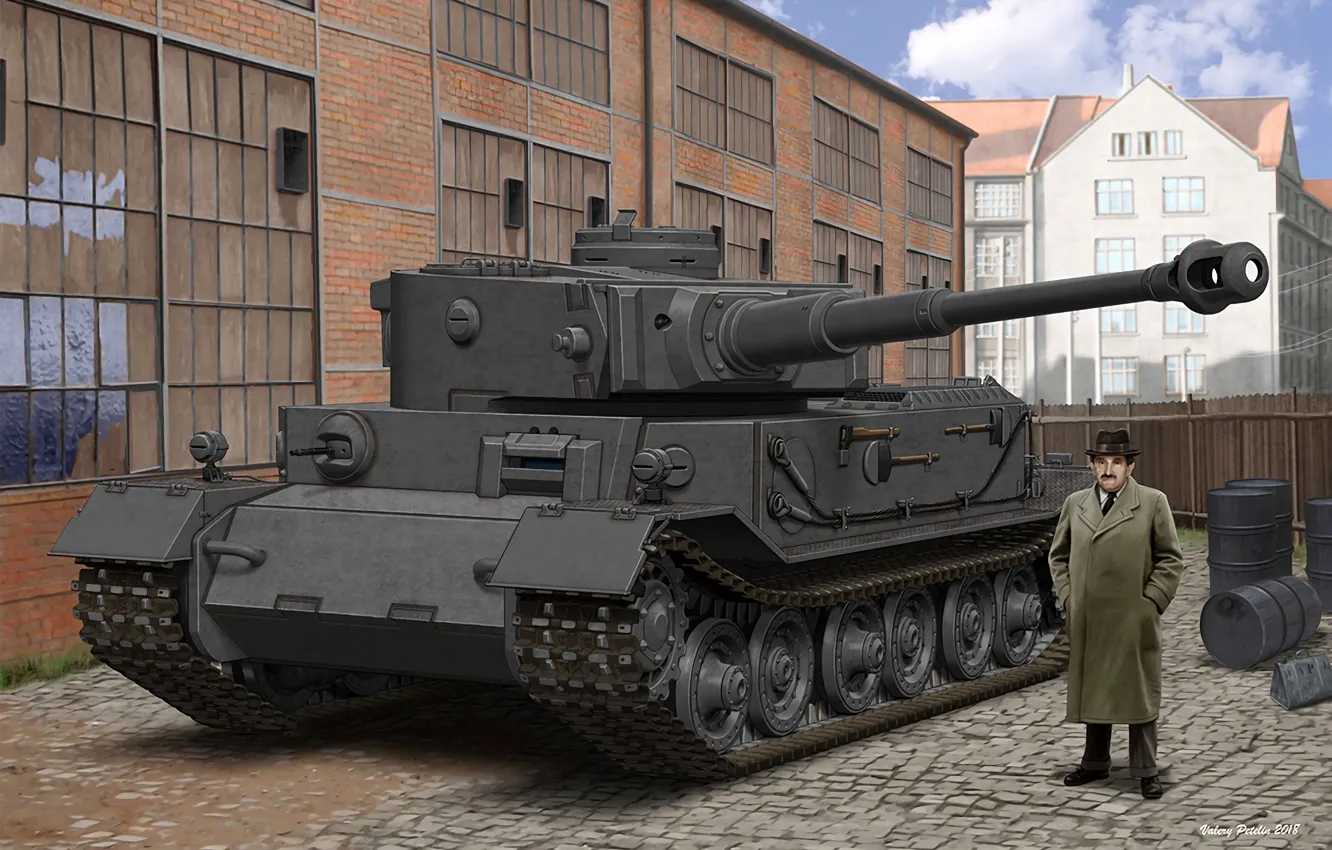The Porsche Tiger: Ferdinand Porsche's Fascinating Tank Design
Share

Porsche is synonymous with high-performance sports cars and luxury vehicles, but the brand's history goes beyond just sleek automobiles. It is a tale that intertwines with military innovation, particularly during World War II. One of the most intriguing projects that emerged from Ferdinand Porsche's workshop was the enigmatic “Porsche Tiger.” This armored tank design was both ambitious and ambitious, showcasing Porsche's engineering prowess in an uncommonly military domain. In this article, we will explore the history, design, and impact of the Porsche Tiger, providing an in-depth look at a lesser-known chapter of Porsche's storied legacy.
The Historical Context of the Porsche Tiger
The inception of the Porsche Tiger occurred during a tumultuous period in global history. As World War II intensified, Germany sought to enhance its military capabilities, particularly in tank warfare. The shortcomings of existing tanks during Blitzkrieg emphasized the need for vehicles that combined armor, speed, and firepower. In this military climate, Porsche received a contract to develop a new heavy tank.
The Role of Ferdinand Porsche

Ferdinand Porsche, the mastermind behind the development of the Porsche 356 and later the iconic 911, was not only a talented automotive architect but also an innovator with a vision for imposing machinery. In 1942, he was tasked with creating a revolutionary tank: the Tiger I. Porsche's design was a bold departure from traditional tank architecture, promising superior performance on the battlefield.
The Unique Design Features of the Porsche Tiger
The Porsche Tiger, or Tiger I, stood out from the competition for several reasons. Its innovative design included:
-
Porsche’s Hybrid Drive System: The most notable feature of the Porsche Tiger was its use of a hybrid drive system, consisting of both gasoline and electric motors. This hybrid approach provided additional mobility and performance enhancements.
-
Unconventional Suspension: Unlike most tanks of its era, the Porsche Tiger employed a unique suspension system called the “Porsche Type 100.” This advanced suspension design contributed significantly to the tank's overall agility and stability on various terrains.
-
Powerful Armament: Armed with a formidable 88mm gun, the Porsche Tiger could engage enemy targets at considerable distances, making it a significant threat on the battlefield.
-
Heavy Armor Protection: The chassis was designed with exceptional armor, enabling the Porsche Tiger to withstand enemy fire better than many of its contemporaries.

Testing and Production
Despite its impressive features, the Porsche Tiger project faced challenges during its development. While the designs were daring, the manufacturing capabilities of the time lagged, leading to compatibility issues and delays.
In late 1942, prototypes were built, and tests began. However, the complexities of the hybrid drive system and the intricacies of the design meant that production was slow, and the military began to lose patience with Porsche's unorthodox approach.
Additionally, the rival design by Henschel & Son’s Tiger I tank was eventually favored due to its simpler construction and ease of production. Consequently, the Porsche Tiger was primarily relegated to a limited role as a recovery vehicle and a few prototypes while the Henschel design became the primary heavy tank for the German army.
The Fate of the Porsche Tiger
Ultimately, only a fraction of the Porsche Tigers ever saw combat, resulting in a curious footnote in tank history. The prototypes and a small number of production models were used for specialized roles, such as tank recovery and salvage. Many of the vehicles that were produced ended up being repurposed or scrapped after the war.

What the Porsche Tiger Represents Today
The Porsche Tiger is more than just a military vehicle; it represents an essential junction in Porsche's evolution as a company. While the Tiger's design did not become the cornerstone of armored warfare, it undoubtedly illustrated Ferdinand Porsche’s innovative spirit and pioneering engineering. This inclination for original ideas would carry over into his automotive designs, ultimately leading to the creation of some of the world's most celebrated sports cars.
The Legacy of Military Innovation
Today, the balance of performance and ingenuity that the Porsche Tiger attempted to achieve continues to inspire engineers and automotive designers. The lessons learned from the development of military vehicles have influenced civilian automobile design, particularly in terms of strength, safety, and efficiency.
The story of the Porsche Tiger also emphasizes the importance of adaptability and innovation in the automotive world. The evolution of the Porsche brand has been rooted in a commitment to pushing beyond established boundaries, much like the ambitious vision Ferdinand Porsche had for his tank design.
Conclusion
In conclusion, the Porsche Tiger stands as a testament to the ambitious engineering prowess of Ferdinand Porsche during a challenging era of global conflict. Although it may have faced misfortune in its production and deployment, the essence of the Porsche spirit remains evident in the relentless pursuit of innovation. As Porsche enthusiasts, we can appreciate the brand’s triumphs in the world of sports cars while recognizing that their history is richly textured with stories of diversity, ambition, and design—even in unexpected arenas like military machinery.
The legacy of the Porsche Tiger isn't merely about its metal and machinery; it resonates with the brand's commitment to excellence and innovation that continues to define Porsche today. So the next time you admire a sleek Porsche sports car, remember that its roots extend deep into history, far beyond the race track and the open road.